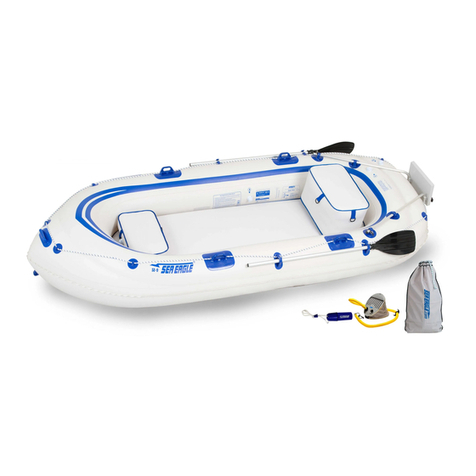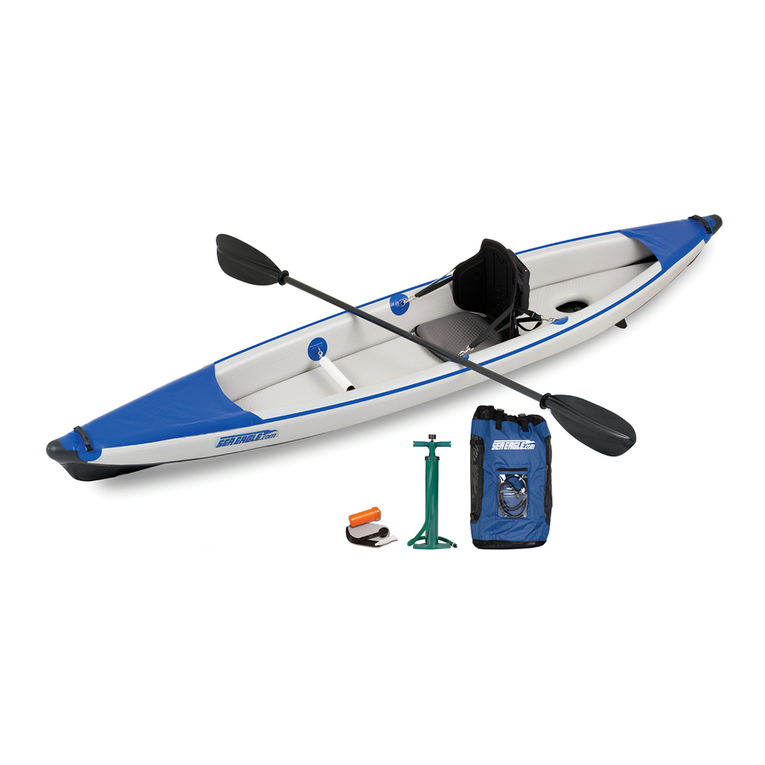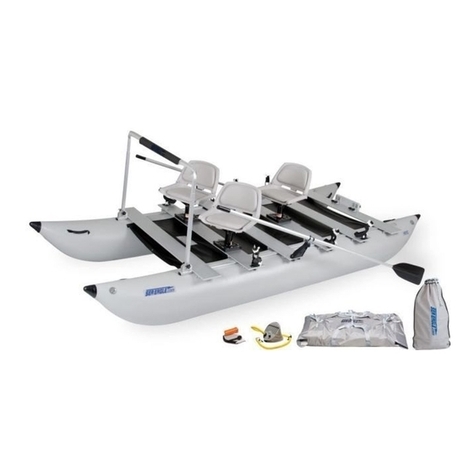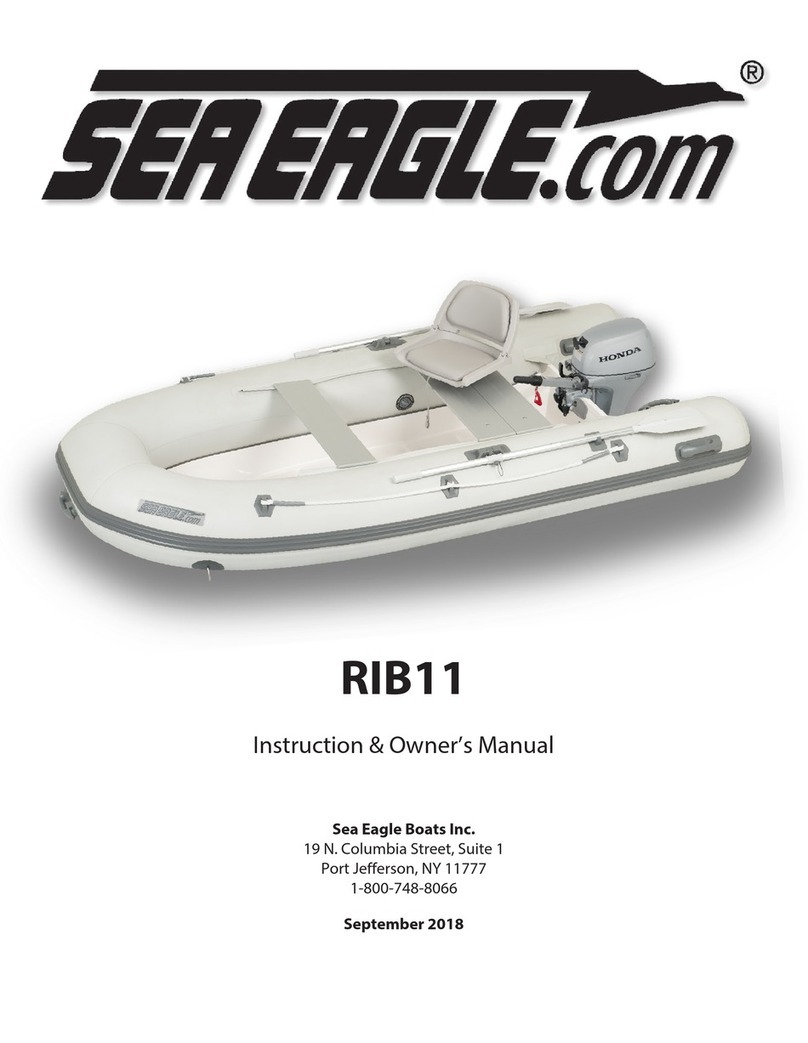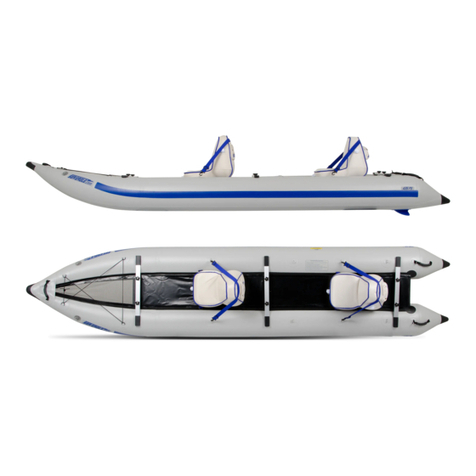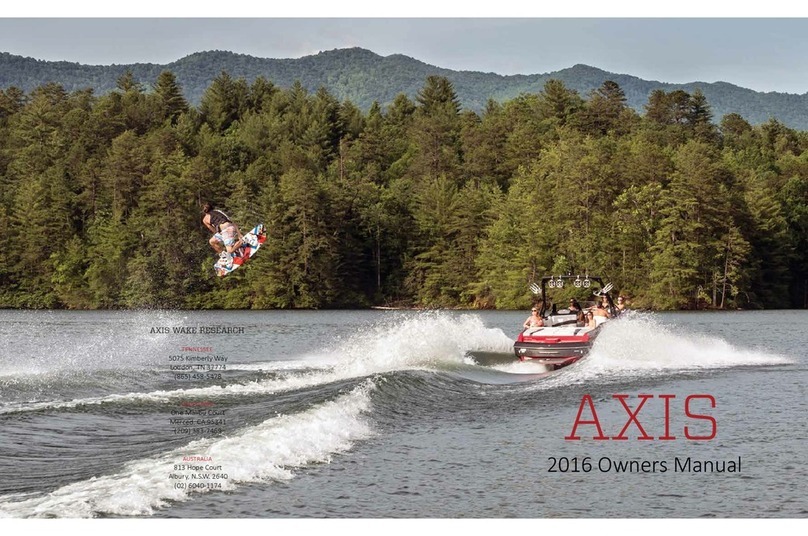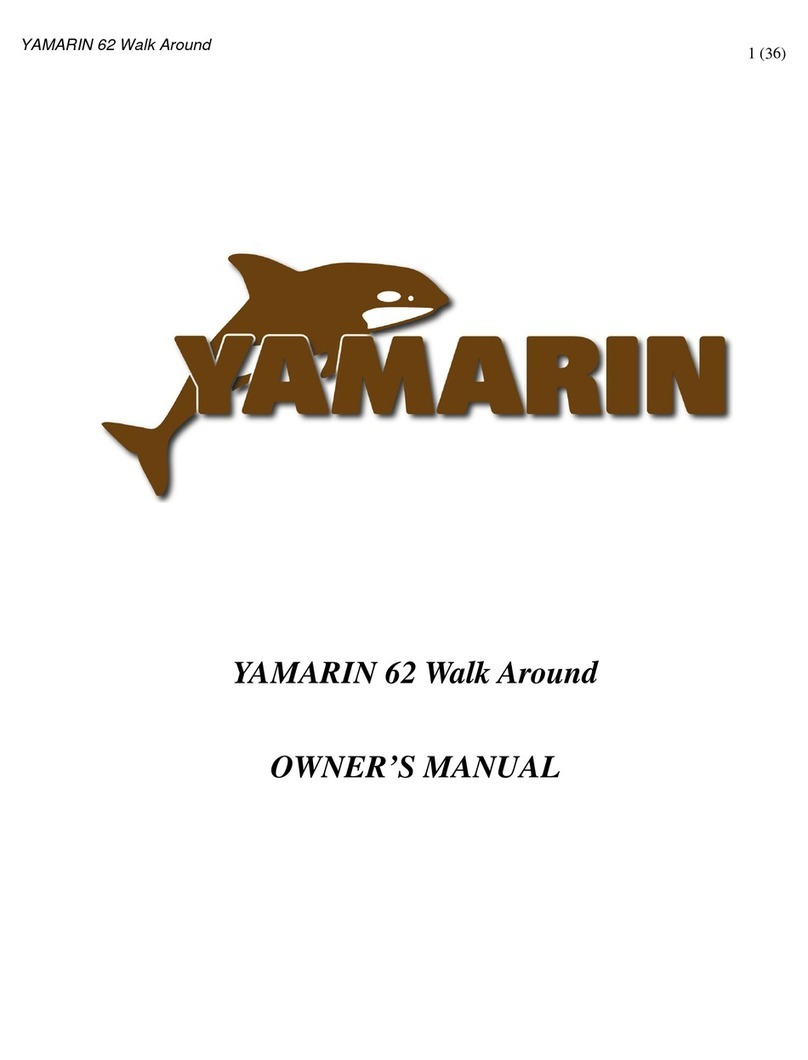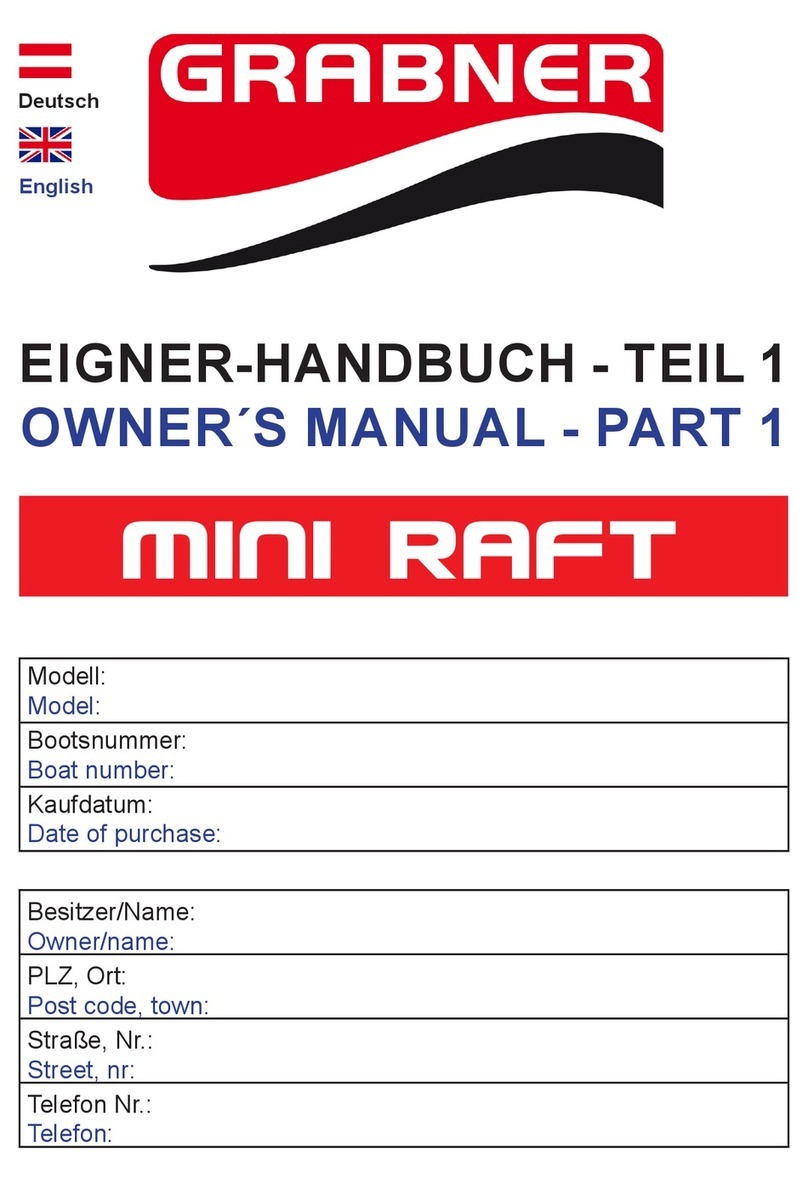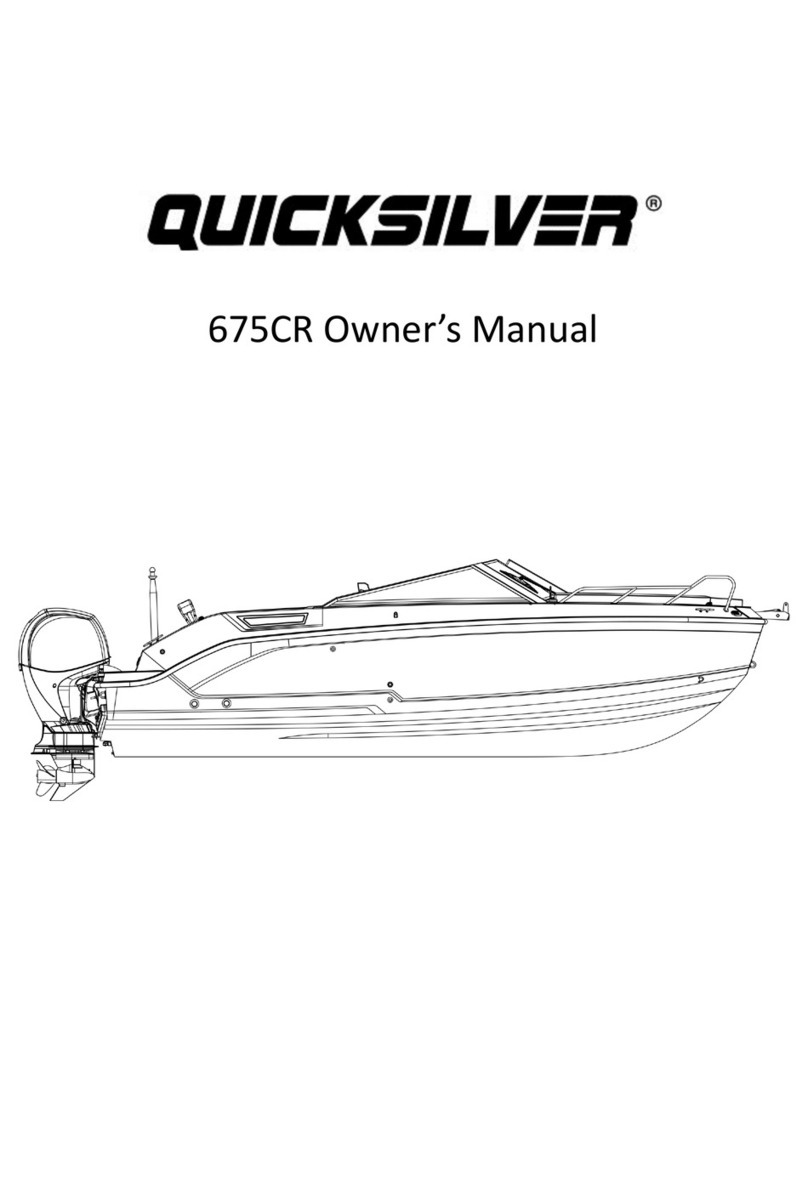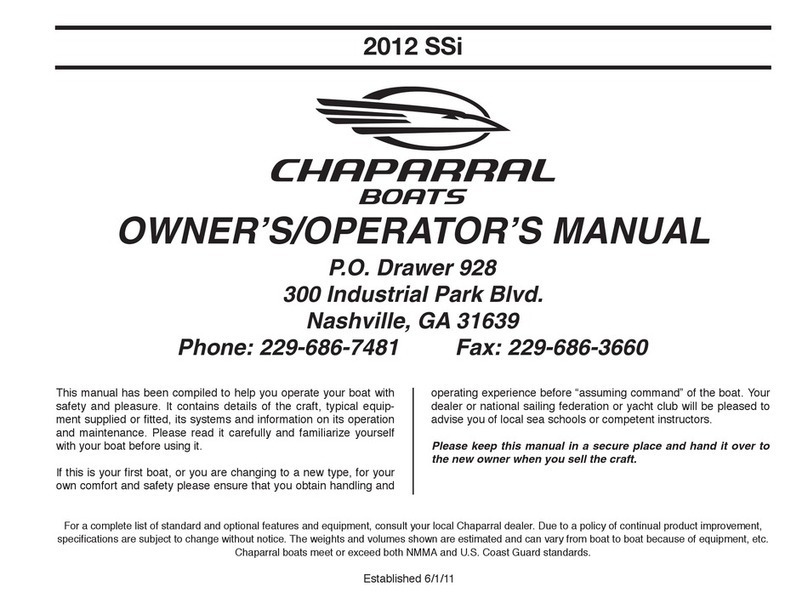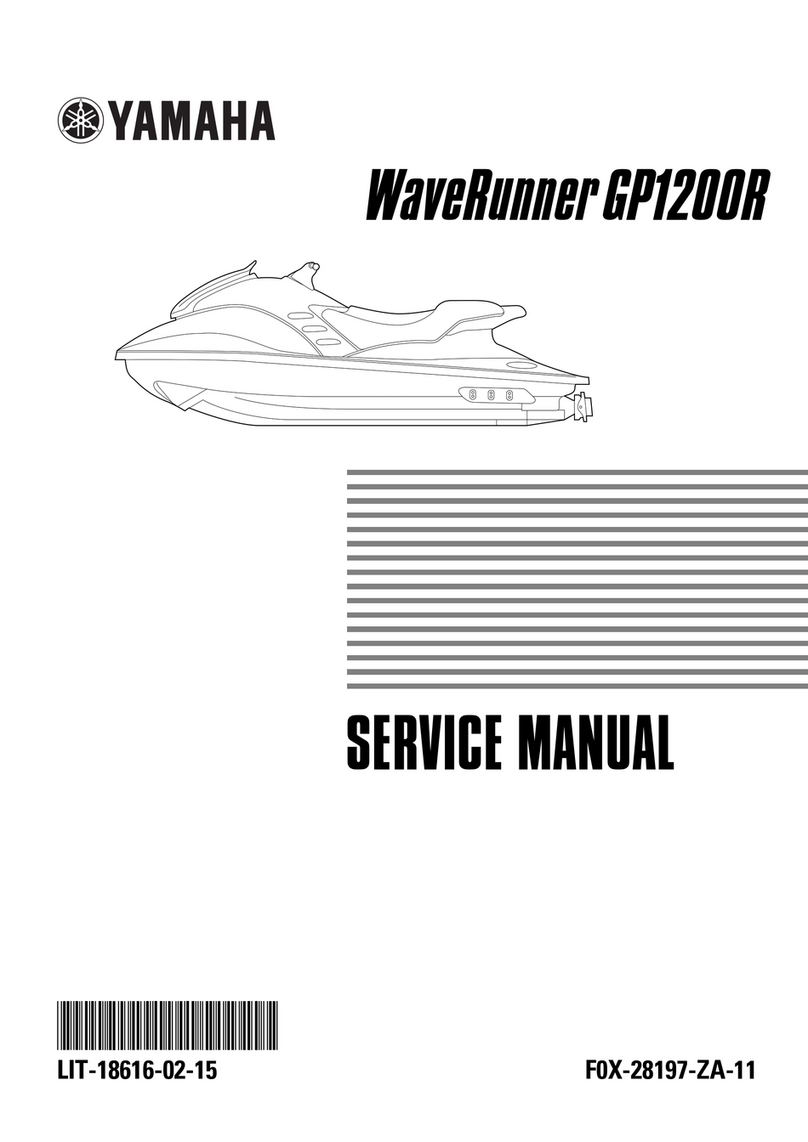
Lake & Stream addling
There are two very important points to consider before venturing out into flat-water environs such as found in bays, lakes
and streams. First, install the skeg underneath the kayak at the stern. The skeg will give you greater better tracking by re-
ducing yaw.
Yaw is the caused by the torque from paddling from side to side and causes the boat to move in a zigzag pattern. Second,
make sure that the drain valves are tightly closed to ensure a dry trip. If the drain valves are not tight, water may leak in
partially fill the kayak, which will make it harder to paddle and will get you and your gear wet in the process. The large side
chambers of the Explorer make the kayak very stable in rough water or large boat wake.
For the most effective paddling, sit up straight and hold the paddle out in front of you with hands out wide enough that the
forearms are perpendicular to the shaft (like a push-up position). Most of the power should come from your torso. Your
arms contribute, but too much reliance on your arms will cause you to tire quickly. For good balance, especially in heavy
seas, keep your head up and eyes focused on the horizon. Start paddling gently and smoothly. As the kayak picks up
speed it will maintain a truer heading. If you dig in hard at first you will create more yaw.
For best performance when paddling with a partner (tandem), place the lighter of the two paddlers in the back of the boat.
Coordinate your strokes. Paddle on the same side in unison. It is up to the person in front to keep a steady pace. The per-
son in the rear is responsible for matching the strokes of their partner while making course corrections and turning the
kayak. Course corrections can be made by easing up or bearing down on one side or the other. entile turns can be
made by sweeping water behind the boat. Sharp turns can be made by using the paddle as a brake on one side. Break-
ing will allow you to maneuver sharp bends in a stream, for example, but kills forward speed.
Whitewater Rivers
Kayaking the worlds’ rivers, especially those with rapids, can be a beautiful and rewarding experience, but it can also be
very dangerous. Respect the awesome power of moving water. It is our recommendation that anyone partaking in white-
water activities should be a strong swimmer, and if you are not familiar with the location, be accompanied by someone ex-
perienced and knowledgeable about the hazards on the river.
Many whitewater locations have local guides for hire or boat rental businesses with knowledgeable personnel. Ask ques-
tions like how high is the river today, what class of whitewater can I expect to encounter and how do I contact emergency
services if needed?
Whitewater is classified in six levels: Class I through Class VI. Class I is considered easy and only basic boating skills are
needed. Class VI is too dangerous to pass through and should not be attempted. Sea Eagle Fast Track kayaks are rated
for use in up to Class II whitewater which means: some rough water, maybe some rocks, small drops, might require ma-
neuvering. (Skill Level: Basic Paddling Skill). It is very important to learn as much about a river as you can before you go
down it, and be prepared to deal with changing conditions or dangers that might arise.
Don’t be hesitate to portage (carry your boat and equipment) around obstacles that appear to be beyond your ability.
When kayaking a river, you are likely to move from areas of flat-water into areas of whitewater and back again. Open the
drain valves before entering the rapids so the boat will not swamp under the weight of water flowing in. With the drains
open, the boat will partially fill with water. The amount of water will depend on how much weight is in the kayak.
You will need the skeg for the flat-water sections. The skeg can be slid in and out of the base without deflating the boat. If
you consistently paddle a shallow river, you can purchase a skeg and cut it down so it does not draw as much water. Of
course cutting the skeg down will reduce its effectiveness, but paddling on flat-water without a skeg is difficult.
We recommend always having the foot pump with the boat in the event of an air leak of if you need to let air out for some
reason. Our Tall Back Seats (TBS) are recommended because of their low center of gravity. We also recommend a foot
rest, and for more challenging rivers, thigh straps.
Riding Surf
If you are not familiar with the ocean, take appropriate care such as always kayaking within the range of an active life-
guard station and NEVER going into ocean waves that are rougher than you can handle. Do not lose sight of oncoming
waves and DO NOT exhaust yourself in the ocean! It is always better to end the day early and safe than push yourself
when you’re tired. You will need many of the skills used in surfing such as reading the break, getting through the break,
paddling hard to catch waves and pulling out before wiping out.
2
O ERATING YOUR SEA EAGLE
















